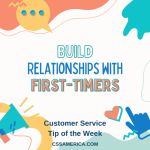When Cleveland Indians’ pitcher Chris Perez chastised fans for not showing up at the stadium and for booing the first place team, a Sports firestorm erupted. How dare the player get on the fans?! What right does he have to rip fans?! Where does a rich player come off chastising people who pay their hard earned money for entertainment…and his paycheck?!
In the article Chris Perez calls out Indians fans, Perez’ rant is documented, and the team’s counter to his comments is noted as well. The team distanced themselves from his words, and praised the fans.
When you hear about this story, what it essentially comes down to is last place attendance for a first place team. So Perez’ solution to the issue is to say “Hey! We’re in first! Support us!” It’s an emotional reaction from a guy who apparently wants to win and wants support.
But that’s just the solution; nowhere in the article does it get at the root cause of the attendance problem. Many sports teams (many businesses for that matter) address issues with attendance or sales or revenue or retention with solutions without ever determining the root cause of the problem.
I was once told by the owner of a professional football franchise that the only thing that drives attendance is “wins and weather.” Well if that was true, then we could put a mathematical calculation together that looked at weather forecasts and wins, and determine attendance every year. If that were true, you could fire most anybody in business operations as well as game day staff, and there would be no impact on attendance. So while wins and weather have some impact, they don’t tell the whole story.
For the Cleveland Indians or any organization to truly fix attendance/sales/retention issues, they have to learn how to get to the root cause – what can be controlled in business operations, in particular. They have to think about how to – on an ongoing basis – learn from fans, develop relationships with fans, retain and grow business with fans.
Don’t let your company’s players try to guilt fans into spending their money with you. Find out why they left, and address those root causes to keep them.
Interested in addressing your team’s fan relations/retention? Check out: http://cssamerica.com/csssport.htm





















